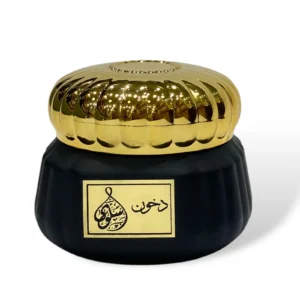Agarwood, also known as oud or “liquid gold,” is one of the most sought-after commodities in the world of luxury perfumery. But beyond its fragrance, agarwood has a range of benefits, particularly in the wellness and health sectors. In recent years, agarwood plantation has gained traction in countries like the Philippines, where the potential for both domestic use and international export is growing rapidly.
This blog will explore the business potential of agarwood plantation in the Philippines, the benefits of agarwood, and practical tips on how to grow agarwood trees. Whether you’re considering venturing into this profitable industry or are simply curious about its benefits, keep reading to learn more.
What Is Agarwood and Why Is It So Valuable?
Agarwood is the dark, fragrant resin produced by the Aquilaria tree, which forms when the tree is infected by a specific type of mold. This infection triggers the tree to produce the resin as a defense mechanism. Over time, the resin becomes more concentrated, eventually forming agarwood, which is highly prized for its use in perfumes, incense, and traditional medicine.
The high demand for agarwood oud in the global market makes it one of the most expensive substances in the world, driving interest in plantations, particularly in countries with tropical climates like the Philippines.
Business Potential of Agarwood Plantation in the Philippines
The Philippines’ climate—hot, humid, and tropical—makes it an ideal location for growing agarwood trees. With rising global demand, particularly in the Middle East and Southeast Asia, the opportunity to start an agarwood plantation in the Philippines offers great business potential.
1. 🌍 Growing Global Demand
As the global perfume market continues to expand, particularly in regions like Dubai and the broader UAE, agarwood (or oud) has become a must-have ingredient in high-end fragrance products. The Philippines has the unique opportunity to cater to this demand, both domestically and internationally.
2. 💼 A Profitable Investment
Given the high market price of agarwood and its resin, an agarwood plantation can be a lucrative long-term investment. Agarwood trees take about 7 to 10 years to mature enough to produce the resin, but once they start producing, they can continue to yield for decades, providing a steady stream of income.
3. 🌱 Sustainable Farming Opportunities
Agarwood farming offers an eco-friendly business opportunity. When done sustainably, agarwood plantations can help preserve forests and provide a natural alternative to other forms of agriculture that may be harmful to the environment.
Agarwood Benefits
The benefits of agarwood extend far beyond its scent. Here’s a look at how agarwood contributes to health and wellness:
1. 🌿 Health Benefits
Agarwood has been used for centuries in traditional medicine. It’s believed to help with digestion, improve circulation, and alleviate symptoms of anxiety and stress. Agarwood oil is also used in aromatherapy for its calming properties.
2. 🌸 Skin Benefits
The agarwood oil is a natural anti-inflammatory and antibacterial agent, making it an excellent addition to skincare products. It helps reduce skin irritations, improves elasticity, and can even help heal wounds.
3. 💧 Cleansing and Detoxification
Agarwood has natural detoxifying properties, and its use as a detox tea or in essential oils helps purify the body, remove toxins, and promote general well-being.
How to Grow Agarwood Trees in the Philippines
If you’re interested in starting an agarwood plantation in the Philippines, here’s a step-by-step guide on how to grow agarwood trees:
1. 🌳 Choosing the Right Location
Agarwood trees thrive in tropical climates with well-drained soil and access to plenty of sunlight. In the Philippines, areas with temperatures between 25°C and 35°C, and rainfall throughout the year, are ideal. The plantation should be far from flood-prone areas, as the trees need well-drained land.
2. 🌱 Planting Agarwood Trees
Start by selecting Aquilaria seedlings or saplings from reputable nurseries. Once you have your saplings, space them about 3 to 5 meters apart to allow the trees room to grow. Ensure the soil is fertile and well-drained, and consider adding organic compost or fertilizer to boost growth.
3. 🌧️ Caring for Agarwood Trees
Agarwood trees require regular watering, especially in the dry season. However, they don’t do well in waterlogged soil, so make sure the plantation has proper drainage. Pruning is also important to maintain tree health and shape.
4. 🦠 Inoculating for Resin Production
For agarwood trees to produce agarwood resin, they must be infected with a specific type of mold. This process is known as inoculation and can be done by drilling small holes into the tree and introducing the mold. There are also natural methods for encouraging the resin production, such as stimulating the tree with stress or injury, though inoculation is the most controlled approach.
5. 🌱 Harvesting the Resin
Once the tree has matured and produced sufficient resin, the harvesting process begins. The agarwood resin is carefully collected from the infected areas and used to produce agarwood oil and other products.
Challenges and Considerations
While agarwood farming offers great business potential, there are also challenges to consider:
- Long Maturation Period: Agarwood trees take years to mature, so patience is required before seeing a return on investment.
- Capital Investment: The initial cost of starting a plantation, including land, saplings, and equipment, can be high.
- Market Fluctuations: The price of agarwood can fluctuate depending on supply and demand, making it essential to stay informed about market trends.
Starting an agarwood plantation in the Philippines can be a profitable and sustainable business venture, especially given the growing demand for agarwood in the international market. With the right location, knowledge, and dedication, you can tap into this lucrative industry and potentially reap the rewards of one of the most precious natural resources on earth.
As the world becomes more inclined toward eco-friendly and sustainable products, agarwood offers both environmental and economic benefits, making it an excellent investment for the future. If you’re ready to venture into the world of agarwood, it’s time to start planning your plantation today.







